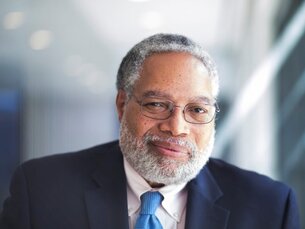
After the Nelson-Atkins Museum of Art in Kansas City, Mo., allowed the police to use its property to stage a response to a protest over George Floyd’s death, its director asked the police to gather elsewhere and issued a public apology.
When the Getty was criticized for putting out “vague” social media posts calling “for equity and fairness” that failed to mention Mr. Floyd, who died in police custody in Minneapolis on May 25, its chief executive pledged to do better.
The language of contrition was similar from the San Francisco Museum of Modern Art after it was criticized for responding to Mr. Floyd’s death with an Instagram post: an image of a work by the artist Glenn Ligon — who is black — without any statement from the institution.
“We can do better,” the apology said. The museum followed up with a second apology days later for having disabled comments in response to criticism of its initial post.
For decades, cultural organizations have generally opted out of politically heated debates, positioning themselves as neutral territory and preferring to let the artists they present do the opining. As civic institutions often supported by taxpayer dollars, they have historically
eschewed political allegiances.
But this time is different.
In the period of protests, many arts organizations have entered the fray. Some of their public messages have been commended as better than silence; others criticized as tone deaf and too little too late.
Such efforts to meaningfully contribute to the conversation are especially sensitive because many of the institutions are led by white executives who answer to boards largely made up of wealthy white trustees. That composition has long fueled suspicion that arts
organizations are inherently resistant to — or incapable of — real change.
“It’s not enough to issue these toothless statements,” tweeted Adrianne Russell, a writer, museums specialist and former employee at the Nelson-Atkins, “and that’s why I wish museums would just be quiet unless they’re going to tell the truth.”
When the Metropolitan Opera tweeted last week that there was “no place for racism in the arts,” several people commented on social media that the company had never performed an opera by a black composer. (Their first — Terence Blanchard's “Fire Shut Up in My
Bones” — was announced last year but has yet to be performed.)
“I do not think art museums have done enough,” Chris Anagnos, the executive director of the Association of Art Museum Directors, said in a statement on the organization’s website. “We have dabbled around the edges of the work, but in our place of privilege we will never live up to the statement that ‘museums are for everyone’ unless we begin to confront, examine and dismantle the various structures that brought us to this point.”
Some responses have landed more successfully than others, namely the impassioned statement from Lonnie G. Bunch III, the secretary of the Smithsonian, who called on his professional cohort to step up.
In his statement, Lonnie G. Bunch III, secretary of the Smithsonian, urged his colleagues in the museum world to do more to address racial injustice. Andrew Harnik/Associated Press
“Will we join the struggle to seek justice and equality?” Mr. Bunch said. “Will we heed the call of courageous figures throughout history who spoke out against slavery, marched on for voting rights, and sat in for basic equality? Will we challenge the nation to live up to its founding ideals? In the memory of those taken from us and for the good of the
country, I hope that we do.”

 RSS Feed
RSS Feed